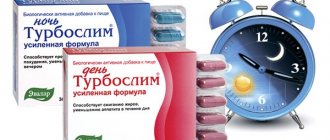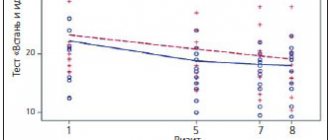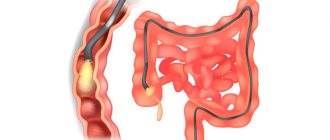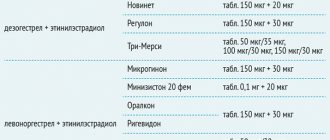Trimebutine
Trimebutine
(lat.
Trimebutine
) - a drug, myotropic antispasmodic, regulator of motility of the gastrointestinal tract. Some gastroenterologists also classify trimebutine as prokinetics (Alekseeva E.V. et al.). It is often used as a salt of maleic acid (trimebutine maleate). Trimebutine maleate is an encephalic ligand of the receptor [2-(dimethylamino)-2-phenylbutyl ester of 3,4,5-trimethoxybenzoic acid] acts as an agonist of peripheral μ, k- and δ-opiate receptors, triggering phase III of the motor complex (Nizhevich A .A., etc.).
Trimebutine is a chemical compound
Chemically, trimebutine is 2-(dimethylamino)-2-phenylbutyl ester of 3,4,5-trimethoxybenzoic acid. The empirical formula of trimebutine is C22H29NO5.
Trimebutine is a drug
Trimebutine is the international nonproprietary name (INN) of the drug.
According to the pharmacological index, trimebutine belongs to the groups “Myotropic antispasmodics” and “Gastrointestinal motility stimulants, including emetics”. According to ATC - to the group “Drugs for the treatment of functional intestinal disorders”, subgroup “Synthetic anticholinergic blockers - esters with a tertiary amino group” and has code A03AA05. Regulation of gastrointestinal motility is ensured by the interaction of nervous and humoral mechanisms. At the level of the intestinal wall, intramural and intercalary neurons are united into plexuses - Meissnerian and Auerbachian, consisting of approximately 108 nerve cells or 20,000 neurons per 1 cm2 of intestinal surface. The neurotransmitters of the enteric nervous system are acetylcholine (pre- and postganglionic parasympathetic neurons), norepinephrine (postganglionic sympathetic neurons), serotonin (serotonergic neurons), dopamine (dopaminergic neurons), nitric oxide (non-adrenergic noncholinergic neurons), ATP (purinergic neurons) and enkephalins ( encephalic neurons). The latter are ligands of peripheral opiate receptors of 3 main types (c, b, k), located on cells throughout the gastrointestinal tract, including smooth muscles. Trimebutine is an agonist of peripheral opiate receptors of these types, acting throughout the gastrointestinal tract. The result of this agonism to all 3 types of receptors is the dual (regulating) effect of trimebutine on the motility of the digestive tract. It also affects the visceral sensitivity of the gastrointestinal tract, providing a moderate analgesic effect, in particular in IBS. This effect is based on the influence of the drug on the antinociceptive system of the body with an increase in the threshold of pain sensitivity, modification of pain assessment, and a decrease in the sensitivity of receptors to inflammatory mediators. Moreover, trimebutine has a local anesthetic effect that is 17 times greater than lidocaine. Trimebutine also affects the humoral regulation of gastrointestinal motility, increasing the secretion of motilin and reducing the level of gastrin, enteroglucagon, pancreatic polypeptide, insulin and vasoactive intensinal polypeptide (Belmer S.V. et al.).
Trimebutine maleate is used in many Western countries to treat functional gastrointestinal disorders. The mechanism of action of trimebutine maleate in patients with functional dyspepsia is not well understood. It has been suggested that the association of the weak opioid properties of trimebutine maleate is associated with sodium channel blockade and the pronounced local analgesic properties explain the effectiveness of trimebutine maleate in the treatment of abdominal pain. At the same time, through opiate receptors, trimebutine maleate mediates the release of gastrointestinal peptides, such as motilin, and modulates the release of other peptides, including vasoactive intestinal peptide, gastrin and glucagon. Trimebutine maleate has a high toxicological safety profile and demonstrates excellent tolerability of the drug. There is no evidence that trimebutine maleate has effects on the central nervous system or crosses the blood-brain barrier. The main indication for the use of trimebutine maleate is dyspeptic disorders in gastroduodenal diseases (abdominal pain, indigestion, nausea, vomiting), as well as irritable bowel syndrome, gastroesophageal reflux disease (Nizhevich A.A. et al.).
Use of trimebutine by pregnant and nursing mothers
Trimebutin is not recommended during the first trimester of pregnancy and for breastfeeding mothers.
Publications for specialists concerning the use of trimebutine in medicine and veterinary medicine
- Akopyan A.N., Belmer S.V., Vykhristyuk O.F. and others. Gastroesophageal reflux and motility disorders of the gastrointestinal tract // Doctor.ru. Pediatrics. Gastroenterology. 2014. No. 11 (99). pp. 45-49.
- Tropskaya N.S., Popova T.S. Trimebutine in the correction of disturbances in the electrical activity of the gastrointestinal tract during experimental endotoxemia // RZHGGK. – 2009. – T.19. – No. 2. – pp. 37–42.
- Belmer S.V., Gasilina T.V., Kovalenko A.A., Karpina L.M. Modern ways of correcting functional disorders of the digestive organs in children // Questions of children's dietology. – 2011. – T. 9. – No. 2. – p. 10–14.
- Uspensky Yu.P., Baryshnikova N.V., Belousova L.N. The effectiveness of trimebutine in relieving abdominal pain syndrome: analysis of PEGEG data // XX Ros. Gastroenterology Week October 6-8. RZHGGK. 2014. No. 5. P. 134.
- Narinskaya N.M. The role of functional disorders of intestinal motility in children with atopic dermatitis. Abstract of dissertation. PhD, 01/14/10 - Skin and venereal diseases. RNIMU named after. N.I. Pirogova, Moscow, 2016.
- Korotky N.G., Narinskaya N.M., Belmer S.V., Ardatskaya M.D. Correction of functional disorders of the motility of the digestive organs in atopic dermatitis in children // Questions of pediatric dietology. 2015. T. 13. No. 4. pp. 5-10.
- Pidzhimyan V.P. The influence of smoking status and the degree of nicotine dependence on the clinical and functional features of the course of GERD, the possibility of using trimebutine in complex therapy. Abstract of dissertation. Ph.D., 01/14/04 – ext. diseases. St. Petersburg State Medical University, St. Petersburg, 2017.
- Zohirov A.N. The effect of transcranial electrical stimulation on the contractile function of the gastrointestinal tract of animals. Abstract of dissertation. Ph.D., 03.03.01 – physiology. KGSHA named after. I.I. Ivanova, Kursk, 2014.
- Sein O.B., Zohirov A.N. The influence of the modeling effects of trimebutine on intestinal motility in dogs // Bulletin of the Kursk State Agricultural Academy. 2014. No. 5. pp. 67–69.
- Shaporova N.L., Pidzhimyan V.P., Dudina O.V., Yablonskaya V.N., Sarkisyan S.R. The use of trimebutine in the complex therapy of GERD in smoking patients // Bulletin of the Russian Military Medical Academy. Clinical researches. – 2016. – 1 (53). pp. 67-71.
- Nizhevich A.A., Valeeva D.S., Sataev V.U., Gafurova K.A., Akhmadeeva E.N., Akhmetshin R.Z. Modern approaches to the treatment of functional dyspepsia in childhood // Questions of pediatric dietology. 2022. T. 15. No. 3. pp. 5-11.
- Plotnikova E.Yu., Gracheva T.Yu. The place of trimebutine in the conservative treatment of sphincter of Oddi dysfunction // Attending physician. - 2018. - No. 2.
- Andreev D.N., Dicheva D.T. Optimizing treatment for patients with irritable bowel syndrome: focus on improving compliance. Medical advice. 2019; 3: 118-124.
- Belmer S.V., Abuzin M.N., Donyush E.K., Malkova O.V., Kondrashova Z.A., Boyarchuk N.G., M.D. Ardatskaya. Gastrointestinal motility in children with chronic immune thrombocytopenic purpura. Pediatrics. 2019;98(6):23–30.
- Pakhomova I.G. Motility disorders in functional gastrointestinal disorders. Possibilities of therapeutic correction based on a clinical example. Medical advice. 2020;(5):18–23.
On the website GastroScan.ru in the “Literature” section there is a subsection “Anspasmolytics”, containing publications for healthcare professionals that address the use of antispasmodics in the treatment of diseases of the gastrointestinal tract.
Videos (reports and lectures) for healthcare professionals regarding the use of trimebutine
| Belmer S.V. Prospects for electrogastroenterography in pediatrics: achievements and problems | |
| Minushkin O.N. Prokinetics in gastroenterological practice |
Video for medical university students
Frame “Trimebutin” from a video lecture for 3rd year students of the Faculty of Medicine of PSPbSMU named after.
acad. I.P. Pavlova: Melnikov K.N. Drugs affecting the gastrointestinal tract On the website in the “Video” section there is a subsection for patients “Popular Gastroenterology” and subsections “For doctors” and “For medical students and residents”, containing video recordings of reports, lectures, webinars in various areas of gastroenterology for healthcare professionals and medical students.
Trade names of drugs with the active ingredient trimebutine
Medicines with the active ingredient trimebutine, registered (or having been registered in the past) in Russia: Neobutin (manufactured by JSC Pharmaceutical Enterprise Obolenskoye), Neobutin Retard (Samil Pharm Co., Ltd, Korea and JSC Pharmaceutical Enterprise Obolenskoye) ), Trimebutin SZ (Severnaya Zvezda JSC), Trimedat (Valenta Pharm JSC), Trimedat Valenta (Valenta Pharm PJSC), Trimedat Forte (Valenta Pharm PJSC).
The drug Trimpa 200 produced by McLeods, India and others is presented on the Ukrainian and Kazakh pharmaceutical markets.
Trimebutine is not approved for use in the United States. In some countries of the European Union, trimebutine is sold under the trade names Debricalm, Debridat, Digerent, Garapepsin, Ircolon, Recutin, Polybutin, Transacalm, Tribux and others. In Canada: Apo-Trimebutine and Modulon. In Japan: Butikinon, Cerekinon, Mebucolon, Mebutit, Nepten, Sakion, Supeslon, Tefmetin, VeM and others.
Official instructions for the use of drugs with the active ingredient trimebutine
- “Instructions for the medical use of the drug Trimedat” (pdf), approved by Roszdravnadzor on December 28, 2007.
- “Instructions for use of the drug for medical use Trimedat Valenta” (pdf), approved by the Ministry of Health of Russia on July 8, 2014.
- “Instructions for use of the drug for medical use Neobutin” (pdf), approved by the Ministry of Health of Russia on July 20, 2015.
- “Instructions for use of the drug for medical use NEOBUTIN retard” (pdf), approved by the Ministry of Health of Russia on September 22, 2015.
- “Instructions for use of the drug Trimedat forte” (pdf), approved by the Ministry of Health of Russia on December 20, 2017.
- “Instructions for use of the drug Trimebutin-SZ” (pdf), approved by the Ministry of Health of Russia on December 3, 2018.
Trimebutine has contraindications, side effects and application features; consultation with a specialist is necessary. Back to section
Niaspam
An analogue of Trimedat is Niaspam with the active ingredient - mebeverine hydrochloride (Niaspam is also an analogue of Duspatalin, Dutan, Mebeverine). Available in capsules of 200 mg of active principle. Appointed from age 18. Indicated for relieving intestinal spasms, contraindicated in case of individual intolerance to the components of the product, pregnancy, lactation. The drug can cause a skin rash, Quincke's edema and other manifestations of allergies.
In case of kidney pathology, the dosage is not adjusted.
Price – 364 rubles.
Sparex
The myotropic antispasmodic Sparex is an analogue of Trimedat with the active component in the form of mebeverine hydrochloride. The drug is available in capsules with 200 mg of active ingredient. Sparkex is a cheap domestic substitute not only for Trimedat, but also for Dutan and Mebeverine. The essence of the action is the relief of intestinal spasms without involvement in the process of correction of peristalsis. Appointed from age 12.
The drug should not be used while driving a car or operating precision equipment due to the risk of dizziness and drowsiness.
The dosage is individual: one capsule three to four times a day until the therapeutic effect occurs, then the dosage is reduced to maintenance (the dose is calculated by the doctor).
Adverse reactions when taking the drug: cephalalgia, vertigo, drowsiness, allergies, flatulence, dyspepsia, bronchospasm.
Price – 342 rubles.
Trigun
The cheapest analogue of Trimedat based on dicycloverine hydrochloride. The drug is produced in India in tablet form, then paracetamol is added to the main active ingredient, and in an ampoule: in 1 ampoule - 20 mg of the active substance. Indications for use are: pain, inflammation and associated spasm of intestinal smooth muscles. The tablets relieve headaches, relieve fever, and are used for algodismenorrhea and neuralgia.
The drug is prescribed in tablets from the age of 15. Prohibited for ulcerative stomach, hypovolemia, myasthenia gravis, during pregnancy, breastfeeding, allergies to components.
Trigan solution is recommended for relieving colic of any origin, but only from 6 years of age. The remaining contraindications are common to the tablet form.
Price – 92 rubles.








